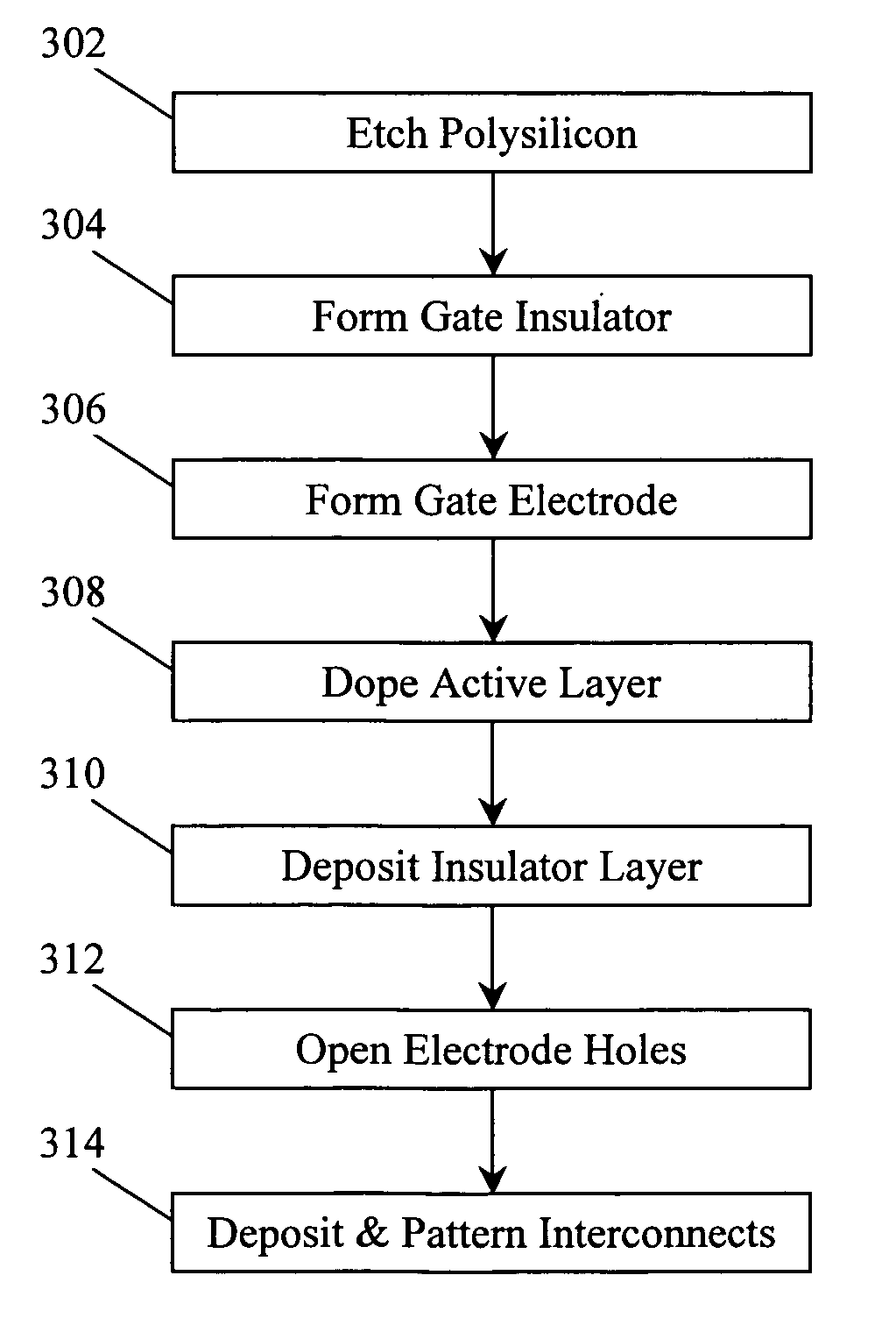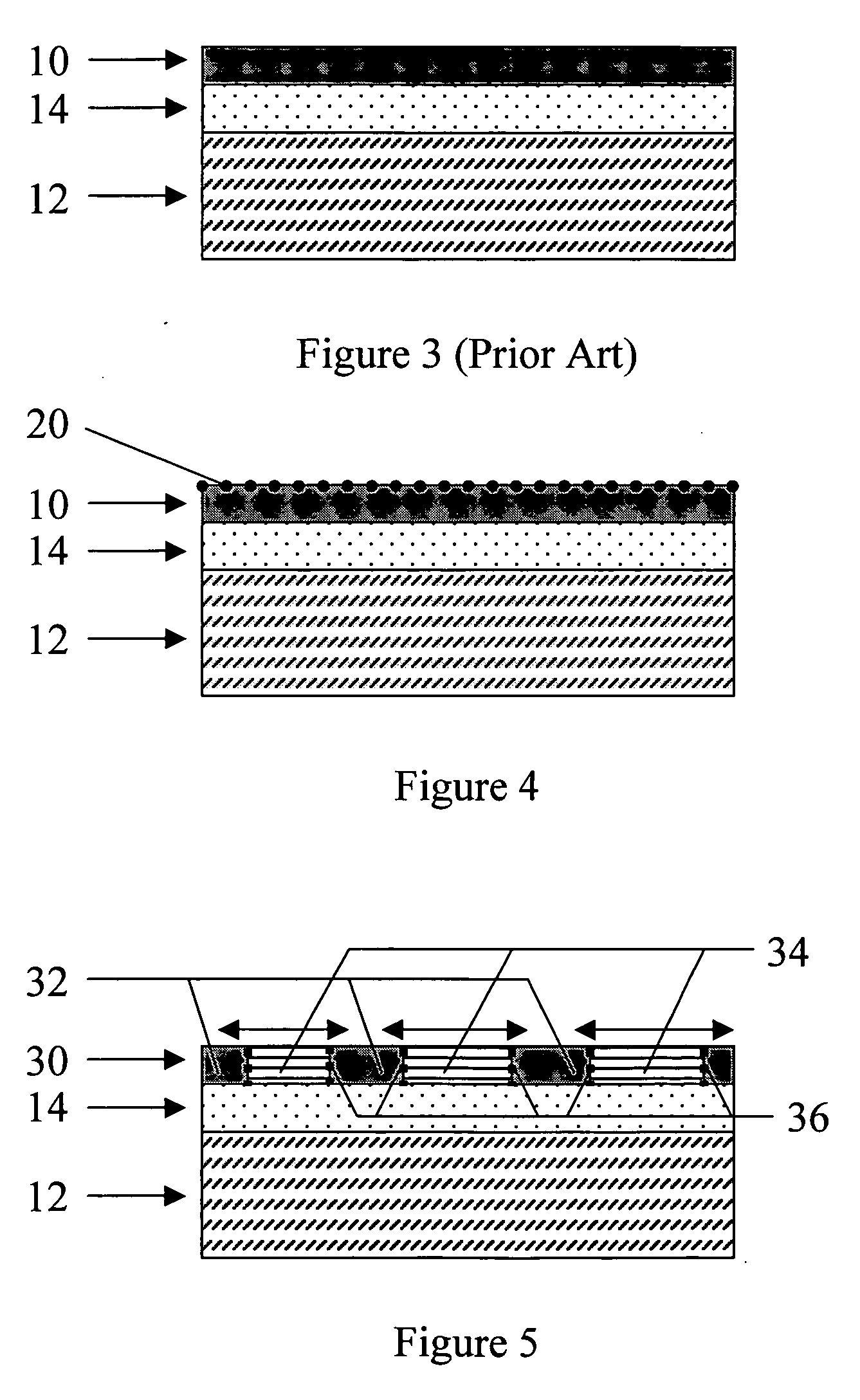Metal-induced crystallization of amorphous silicon, polycrystalline silicon thin films produced thereby and thin film transistors produced therefrom
a technology of amorphous silicon and crystallization, which is applied in the direction of semiconductor devices, electrical appliances, basic electric elements, etc., can solve the problems of increasing the cost of doing so, difficult to realize peripheral circuits, and low operating speed, so as to reduce the amount of residual metal elements and improve the quality of the resulting polycrystalline silicon
- Summary
- Abstract
- Description
- Claims
- Application Information
AI Technical Summary
Benefits of technology
Problems solved by technology
Method used
Image
Examples
Embodiment Construction
[0035]FIG. 1 is a flowchart indicating the basic steps of a process which embodies a first exemplary embodiment of the invention. In step 100, crystallization of an amorphous silicon thin film is initiated to provide a partially crystallized amorphous silicon thin film. In step 200, metal elements in the partially crystallized amorphous silicon thin film are removed and the crystallization of the amorphous silicon thin film is completed (to the extent required).
[0036]FIG. 2 is a flowchart indicating an exemplary set of component steps in the initiating step 100 of FIG. 1. The amorphous silicon thin film is first provided, in step 102. It may be pre-formed prior to the present process or formed as an initial part of the present process in any known way. For example it may be formed at a low temperature, between about 150° C. to about 600° C., using any of a variety of techniques including but not limited to sputtering, evaporation, low-pressure thermal or plasma-enhanced chemical va...
PUM
| Property | Measurement | Unit |
|---|---|---|
| temperature | aaaaa | aaaaa |
| temperature | aaaaa | aaaaa |
| thick | aaaaa | aaaaa |
Abstract
Description
Claims
Application Information
 Login to View More
Login to View More - R&D
- Intellectual Property
- Life Sciences
- Materials
- Tech Scout
- Unparalleled Data Quality
- Higher Quality Content
- 60% Fewer Hallucinations
Browse by: Latest US Patents, China's latest patents, Technical Efficacy Thesaurus, Application Domain, Technology Topic, Popular Technical Reports.
© 2025 PatSnap. All rights reserved.Legal|Privacy policy|Modern Slavery Act Transparency Statement|Sitemap|About US| Contact US: help@patsnap.com



